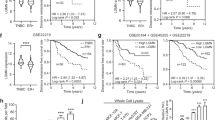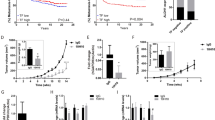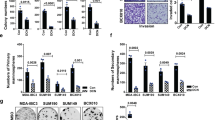Abstract
C-reactive protein (CRP) is an acute phase protein synthesized upon the inflammatory responses, associated with breast cancer. The process of tumor cell invasion and metastasis involves the adherence of cells to the extracellular matrix via integrin as a receptor for matrix molecules. The present study investigated the role of CRP in the adhesive phenotype of breast cells and the underlying mechanisms. Here, we first showed that CRP induces adhesion of MCF10A human breast epithelial cells through the activation of integrin α2 signaling. Expression of integrin α2 was induced by CRP in which transcription factors c-fos and SP1 may be involved. Binding of CRP with integrin α2 leads to the activation of focal adhesion kinase (FAK), paxillin and ERKs. CRP also binds to an Fcγ receptor Fcγ receptor I (FcγRI), and induces activation of paxillin, FAK and ERKs. Integrin α2 and FAK have crucial roles in the adhesive and invasive phenotypes as well as MMP-9 upregulation induced by CRP in MCF10A cells. Treatment with an inflammatory lipid sphingosine-1-phosphate induced CRP, which may be secreted and exert an autocrine effect by binding to FcγRI and integrin α2. Involvement of CRP in adhesion, invasion, anchorage-independent growth and upregulation of integrin α2, paxillin and FAK was observed in MDA-MB-231 triple-negative human breast cancer (TNBC) cells. Using an in vivo invasion model and an orthotopic mouse tumor model with MDA-MB-231 cells, we showed that CRP has an important role in intravasation and tumor growth in vivo, demonstrating the in vivo relevance of our in vitro results. The present study elucidates a critical molecular basis between CRP, integrin α2 and FcγRI pathways in MCF10A breast cells and MDA-MB-231 TNBC cells, thereby providing useful information on CRP-induced aggressiveness of breast cells in the inflammatory microenvironment.
This is a preview of subscription content, access via your institution
Access options
Subscribe to this journal
Receive 50 print issues and online access
$259.00 per year
only $5.18 per issue
Buy this article
- Purchase on Springer Link
- Instant access to full article PDF
Prices may be subject to local taxes which are calculated during checkout






Similar content being viewed by others
References
Jemal A, Siegel R, Ward E, Murray T, Xu J, Thun MJ . Cancer statistics. CA Cancer J Clin 2007; 57: 43–66.
André F, Zielinski CC . Optimal strategies for the treatment of metastatic triple-negative breast cancer with currently approved agents. Ann Oncol 2012; 23: 46–51.
Chambers AF, Groom AC, MacDonald IC . Dissemination and growth of cancer cells in metastatic sites. Nat Rev Cancer 2002; 2: 563–572.
Balkwill F, Mantovani A . Inflammation and cancer: back to Virchow? Lancet 2001; 357: 539–545.
Colotta F, Allavena P, Sica A, Garlanda C, Mantovani A . Cancer-related inflammation, the seventh hallmark of cancer: links to genetic instability. Carcinogenesis 2009; 30: 1073–1081.
Hojilla CV, Wood GA, Khokha R . Inflammation and breast cancer: metalloproteinases as common effectors of inflammation and extracellular matrix breakdown in breast cancer. Breast Cancer Res 2008; 10: 205.
Ames BN, Gold LS, Willett WC . The causes and prevention of cancer. Proc Natl Acad Sci USA 1995; 92: 5258–5265.
Platz EA, De Marzo AM . Epidemiology of inflammation and prostate cancer. J Urol 2004; 171: S36–S40.
Gurleyik E, Gurleyik G, Unalmiser S . Accuracy of serum C-reactive protein measurements in diagnosis of acute appendicitis compared with surgeon’s clinical impression. Dis Colon Rectum 1995; 38: 1270–1274.
Rodriguez-Sanjuan JC, Martin-Parra JI, Seco I, Garcia-Castrillo L, Naranjo A . C-reactive protein and leukocyte count in the diagnosis of acute appendicitis in children. Dis Colon Rectum 1999; 42: 1325–1329.
Allin KH, Nordestgaard BG, Flyger H, Bojesen SE . Elevated pre-treatment levels of plasma C-reactive protein are associated with poor prognosis after breast cancer: a cohort study. Breast Cancer Res 2011; 13: R55.
Ravishankaran P, Karunanithi R . Clinical significance of preoperative serum interleukin-6 and C-reactive protein level in breast cancer patients. World J Surg Oncol 2011; 9: 18.
Kim ES, Cha Y, Ham M, Jung J, Kim SG, Hwang S et al. Inflammatory lipid sphingosine-1-phosphate upregulates C-reactive protein via C/EBPβ and potentiates breast cancer progression. Oncogene 2014; 33: 3583–3593.
Howe A, Aplin AE, Alahari SK, Juliano RL . Integrin signaling and cell growth control. Curr Opin Cell Biol 1998; 10: 220–231.
Bendas G, Borsig L . Cancer cell adhesion and metastasis: selectins, integrins, and the inhibitory potential of heparins. Int J Cell Biol 2012; 2012: 676731–676740.
Mego M, Mani SA, Cristofanilli M . Molecular mechanisms of metastasis in breast cancer – clinical applications. Nat Rev Clin Oncol 2010; 7: 693–701.
Bartolomé RA, Barderas R, Torres S, Fernandez-Aceñero MJ, Mendes M, García-Foncillas J et al. Cadherin-17 interacts with α2β1 integrin to regulate cell proliferation and adhesion in colorectal cancer cells causing liver metastasis. Oncogene 2014; 33: 1658–1669.
Guo YS, Zhao R, Ma J, Cui W, Sun Z, Gao B et al. βig-h3 promotes human osteosarcoma cells metastasis by interacting with integrin α2β1 and activating PI3K signaling pathway. PLoS One 2014; 9: e90220.
Maric G, Annis MG, Dong Z, Rose AA, Ng S, Perkins D et al. GPNMB cooperates with neuropilin-1 to promote mammary tumor growth and engages integrin α5β1 for efficient breast cancer metastasis. Oncogene 2015; 34: 5494–5504.
Hynes RO . Integrins: bidirectional, allosteric signaling machines. Cell 2002; 110: 673–687.
Koukoulis GK, Howeedy AA, Korhonen M, Virtanen I, Gould VE . Distribution of tenascin, cellular fibronectins and integrins in the normal, hyperplastic and neoplastic breast (review). J Submicrosc Cytol Pathol 1993; 25: 285–295.
Yang C, Zeisberg M, Lively JC, Nyberg P, Afdhal N, Kalluri R . Integrin alpha1beta1 and alpha2beta1 are the key regulators of hepatocarcinoma cell invasion across the fibrotic matrix microenvironment. Cancer Res 2003; 63: 8312–8317.
Zou CY, Wen FQ, Chen YX, Liu ZP, Zhang ZX . Effect of integrin alpha2beta1 on invasion and migration of neuroblastoma cells. Zhongguo Dang Dai Er Ke Za Zhi 2008; 10: 386–390.
Tsaur I, Makarević J, Juengel E, Gasser M, Waaga-Gasser AM, Kurosch M et al. Resistance to the mTOR-inhibitor RAD001 elevates integrin α2- and β1-triggered motility, migration and invasion of prostate cancer cells. Br J Cancer 2012; 107: 847–855.
Ibaragi S, Shimo T, Hassan NM, Isowa S, Kurio N, Mandai H et al. Induction of MMP-13 expression in bone-metastasizing cancer cells by type I collagen through integrin α1β1 and α2β1-p38 MAPK signaling. Anticancer Res 2011; 31: 1307–1313.
Fujita M, Takada YK, Izumiya Y, Takada Y . The binding of monomeric C-reactive protein (mCRP) to Integrins αvβ3 and α4β1 is related to its pro-inflammatory action. PLoS One 2014; 9: e93738.
Salgia R, Li JL, Lo SH, Brunkhorst B, Kansas GS, Sobhany ES et al. Molecular cloning of human paxillin, a focal adhesion protein phosphorylated by P210BCR/ABL. J Biol Chem 1995; 270: 5039–5047.
Schaller MD, Parsons JT . pp125FAK-dependent tyrosine phosphorylation of paxillin creates a high-affinity binding site for Crk. Mol Cell Biol 1995; 15: 2635–2645.
Weng Z, Taylor JA, Turner CE, Brugge JS, Seidel-Dugan C . Detection of Src homology 3-binding proteins, including paxillin, in normal and v-Src-transformed BALB/c 3T3 cells. J Biol Chem 1993; 268: 14956–14963.
Turner CE . Paxillin and focal adhesion signalling (review). Nat Cell Biol 2000; 2: E231–E236.
Soule HD, Maloney TM, Wolman SR, Peterson WD Jr, Brenz R, McGrath CM et al. Isolation and characterization of a spontaneously immortalized human breast epithelial cell line, MCF-10. Cancer Res 1990; 50: 6075–6086.
Qu Y, Han B, Yu Y, Yao W, Bose S, Karlan BY et al. Evaluation of MCF10A as a reliable model for normal human mammary epithelial cells. PLoS One 2015; 10: e0131285.
Young B, Gleeson M, Cripps AW . C-reactive protein: a critical review. Pathology 1991; 23: 118–124.
Ye J, Xu RH, Taylor-Papadimitriou J, Pitha PM . Sp1 binding plays a critical role in Erb-B2- and v-ras-mediated downregulation of alpha2-integrin expression in human mammary epithelial cells. Mol Cell Biol 1996; 16: 6178–6189.
Zutter MM, Santoro SA, Painter AS, Tsung YL, Gafford A . The human alpha 2 integrin gene promoter. Identification of positive and negative regulatory elements important for cell-type and developmentally restricted gene expression. J Biol Chem 1994; 269: 463–469.
Sawhney RS, Sharma B, Humphrey LE, Brattain MG . Integrin alpha2 and extracellular signal-regulated kinase are functionally linked in highly malignant autocrine transforming growth factor-alpha-driven colon cancer cells. J Biol Chem 2003; 278: 19861–19869.
Hanks SK, Ryzhova L, Shin NY, Brábek J . Focal adhesion kinase signaling activities and their implications in the control of cell survival and motility (review). Front Biosci 2003; 8: d982–d996.
Chi M, Tridandapani S, Zhong W, Coggeshall KM, Mortensen RF . C-reactive protein induces signaling through Fc gamma RIIa on HL-60 granulocytes. J Immunol 2002; 168: 1413–1418.
Ortiz-Stern A, Rosales C . Cross-talk between Fc receptors and integrins. Immunol Lett 2003; 90: 137–143.
Depraetere S, Willems J, Joniau M . Stimulation of CRP secretion in HepG2 cells: cooperative effect of dexamethasone and interleukin 6. Agents Actions 1991; 34: 369–375.
Venugopal SK, Devaraj S, Jialal I . Macrophage conditioned medium induces the expression of C-reactive protein in human aortic endothelial cells: potential for paracrine/autocrine effects. Am J Pathol 2005; 166: 1265–1271.
Mira E, Lacalle RA, Gómez-Moutón C, Leonardo E, Mañes S . Quantitative determination of tumor cell intravasation in a real-time polymerase chain reaction-based assay. Clin Exp Metastasis 2002; 19: 313–318.
Ridker PM . From C-reactive protein to interleukin-6 to interleukin-1: moving upstream to identify novel targets for atheroprotection. Circ Res 2016; 118: 145–156.
Indik ZK, Hunter S, Huang MM, Pan XQ, Chien P, Kelly C et al. The high affinity Fc gamma receptor (CD64) induces phagocytosis in the absence of its cytoplasmic domain: the gamma subunit of Fc gamma RIIIA imparts phagocytic function to Fc gamma RI. Exp Hematol 1994; 22: 599–606.
Knupfer H, Preiss R . Significance of interleukin-6 (IL-6) in breast cancer (review). Breast Cancer Res Treat 2007; 102: 129–135.
Pierce BL, Ballard-Barbash R, Bernstein L, Baumgartner RN, Neuhouser ML, Wener MH et al. Elevated biomarkers of inflammation are associated with reduced survival among breast cancer patients. J Clin Oncol 2009; 27: 3437–4344.
Maemura M, Akiyama SK, Woods VL Jr, Dickson RB . Expression and ligand binding of alpha 2 beta 1 integrin on breast carcinoma cells. Clin Exp Metastasis 1995; 13: 223–235.
Yoshimura K, Meckel KF, Laird LS, Chia CY, Park JJ, Olino KL et al. Integrin alpha2 mediates selective metastasis to the liver. Cancer Res 2009; 69: 7320–7328.
Ramirez NE, Zhang Z, Madamanchi A, Boyd KL, O'Rear LD, Nashabi A et al. The α2β1 integrin is a metastasis suppressor in mouse models and human cancer. J Clin Invest 2011; 121: 226–237.
Woollard KJ, Fisch C, Newby R, Griffiths HR . C-reactive protein mediates CD11b expression in monocytes through the non-receptor tyrosine kinase, Syk, and calcium mobilization but not through cytosolic peroxides. Inflamm Res 2005; 54: 485–492.
Schaller MD . FAK and paxillin: regulators of N-cadherin adhesion and inhibitors of cell migration? (review).. J Cell Biol 2004; 166: 157–159.
Cance WG, Golubovskaya VM . Focal adhesion kinase versus p53: apoptosis or survival? Sci Signal 2008; 1: pe22.
Golubovskaya VM, Figel S, Ho BT, Johnson CP, Yemma M, Huang G et al. A small molecule focal adhesion kinase (FAK) inhibitor, targeting Y397 site: 1-(2-hydroxyethyl)-3, 5, 7-triaza-1-azoniatricyclo [3.3.1.1(3,7)]decane; bromide effectively inhibits FAK autophosphorylation activity and decreases cancer cell viability, clonogenicity and tumor growth in vivo. Carcinogenesis 2012; 33: 1004–1013.
Monteiro RC, Van De Winkel JG . IgA Fc receptors (review). Annu Rev Immunol 2003; 21: 177–204.
Schmidt RE, Gessner JE . Fc receptors and their interaction with complement in autoimmunity (review). Immunol Lett 2005; 100: 56–67.
Yang J, Wezeman M, Zhang X, Lin P, Wang M, Qian J et al. Human C-reactive protein binds activating Fcgamma receptors and protects myeloma tumor cells from apoptosis. Cancer Cell 2007; 12: 252–265.
Haimovich B, Regan C, DiFazio L, Ginalis E, Ji P, Purohit U et al. The FcgammaRII receptor triggers pp125FAK phosphorylation in platelets. J Biol Chem 1996; 271: 16332–16337.
Galon J, Gauchat JF, Mazières N, Spagnoli R, Storkus W, Lötze M et al. Soluble Fcgamma receptor type III (FcgammaRIII, CD16) triggers cell activation through interaction with complement receptors. J Immunol 1996; 157: 1184–1192.
Metzger-Filho O, Tutt A, de Azambuja E, Saini KS, Viale G, Loi S et al. Dissecting the heterogeneity of triple-negative breast cancer. J Clin Oncol 2012; 30: 1879–1887.
Moon A, Kim MS, Kim TG, Kim SH, Kim HE, Chen YQ et al. H-ras, but not N-ras, induces an invasive phenotype in human breast epithelial cells: a role for MMP-2 in the H-ras induced invasive phenotype. Int J Cancer 2000; 85: 176–181.
Lee HM, Moon A . Amygdalin regulates apoptosis and adhesion in Hs578T triple-negative breast cancer cells. Biomol Ther (Seoul) 2016; 24: 62–66.
Kim MS, Lee EJ, Kim HRC, Moon A . p38 kinase is a key signaling molecule for H-ras-induced cell motility and invasive phenotype in human breast epithelial cells. Cancer Res 2003; 63: 5454–5461.
Hwang HS, Park IY, Kim DW, Choi SY, Jung YO, Kim HA . PEP-1-FK506BP12 inhibits matrix metalloproteinase expression in human articular chondrocytes and in a mouse carrageenan-induced arthritis model. BMB Rep 2015; 48: 407–412.
Song H, Ki SH, Kim SG, Moon A . Activating transcription factor 2 mediates matrix metalloproteinase-2 transcriptional activation induced by p38 in breast epithelial cells. Cancer Res 2006; 66: 10487–10496.
Kim ES, Kim JS, Kim SG, Hwang S, Lee CH, Moon A . Sphingosine 1-phosphate regulates matrix metalloproteinase-9 expression and breast cell invasion through S1P3-Gαq coupling. J Cell Sci 2011; 124: 2220–2230.
Kim KM, Lim HK, Shim SH, Jung J . Improved chemotherapeutic efficacy of injectable chrysin encapsulated by copolymer nanoparticles. Int J Nanomedicine 2017; 12: 1917–1925.
Koh M, Woo Y, Valiathan RR, Jung HY, Park SY, Kim YN et al. Discoidin domain receptor 1 is a novel transcriptional target of ZEB1 in breast epithelial cells undergoing H-Ras-induced epithelial to mesenchymal transition. Int J Cancer 2015; 136: E508–E520.
Acknowledgements
The present study was supported by Priority Research Centers Program (no. 2016R1A6A1A03007648), the Bio & Medical Technology Development Program (no. 2015M3A9B6074045) and Basic Science Program (no. 2014R1A6A3A01059908) of the NRF funded by the Korean government.
Author information
Authors and Affiliations
Corresponding author
Ethics declarations
Competing interests
The authors declare no conflict of interest.
Additional information
Supplementary Information accompanies this paper on the Oncogene website
Supplementary information
Rights and permissions
About this article
Cite this article
Kim, ES., Kim, S., Koh, M. et al. C-reactive protein binds to integrin α2 and Fcγ receptor I, leading to breast cell adhesion and breast cancer progression. Oncogene 37, 28–38 (2018). https://doi.org/10.1038/onc.2017.298
Received:
Revised:
Accepted:
Published:
Issue Date:
DOI: https://doi.org/10.1038/onc.2017.298
This article is cited by
-
C-reactive protein promotes tongue squamous cell carcinoma chemoresistance by inhibiting the activation of caspase-3/9 via the CD64/AKT/mTOR pathway
Human Cell (2021)
-
C-reactive protein adjusted for body mass index as a predictor of postoperative complications following laparoscopic gastrectomy for gastric cancer
Langenbeck's Archives of Surgery (2021)
-
On detection of periodicity in C-reactive protein (CRP) levels
Scientific Reports (2018)



